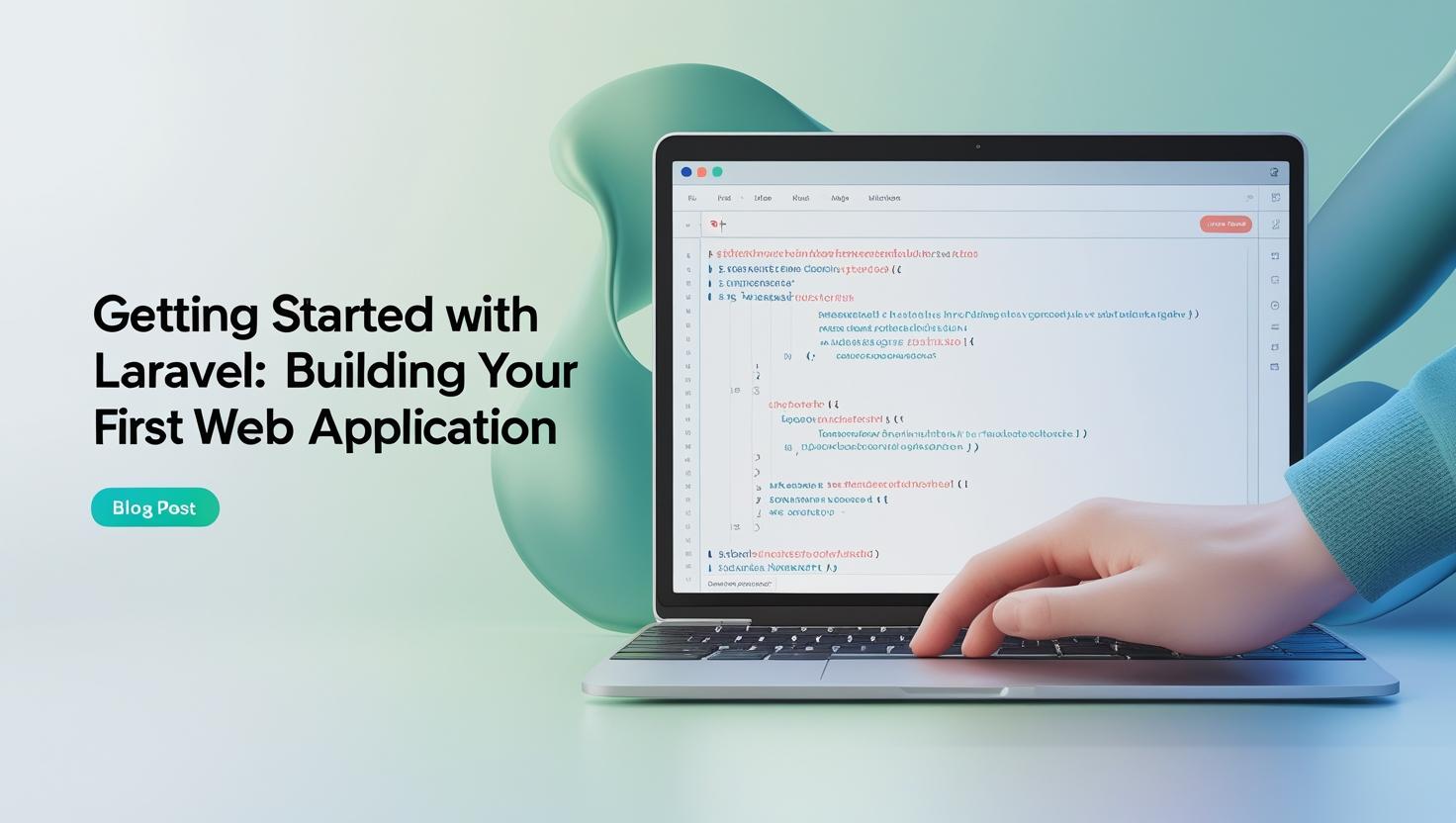Azwar's Blog
Getting Started with Laravel: Building Your First Web Application
Hi everyone! I'm Azwar, a WordPress and Laravel developer. In this guide, I'll walk you through getting started with Laravel, one of the most popular PHP frameworks for building robust web applications. Whether you're coming from WordPress development or starting fresh, Laravel offers powerful tools for creating scalable applications.

Laravel is a free, open-source PHP web framework designed to make the development process more enjoyable for developers by taking care of common tasks used in many web projects. It provides a rich set of features including authentication, routing, sessions, caching, and more.
Prerequisites
Before we begin, make sure you have the following installed:
- PHP 8.1 or higher
- Composer (PHP package manager)
- Node.js and NPM (for frontend assets)
- A code editor (VS Code recommended)
Step 1: Installing Laravel
First, let's install Laravel using Composer:
composer create-project laravel/laravel my-first-app cd my-first-app
Step 2: Setting Up Your Environment
Copy the environment file and configure your database:
cp .env.example .env php artisan key:generate
Edit the .env file to configure your database connection:
DB_CONNECTION=mysql DB_HOST=127.0.0.1 DB_PORT=3306 DB_DATABASE=my_first_app DB_USERNAME=root DB_PASSWORD=your_password
Step 3: Understanding Laravel's MVC Architecture
Laravel follows the Model-View-Controller (MVC) pattern:
Models
Models represent your database tables and handle data logic:
<?php namespace App\Models; use Illuminate\Database\Eloquent\Model; class Post extends Model { protected $fillable = [ 'title', 'content', 'author_id' ]; public function author() { return $this->belongsTo(User::class, 'author_id'); } }
Controllers
Controllers handle the application logic and coordinate between models and views:
<?php namespace App\Http\Controllers; use App\Models\Post; use Illuminate\Http\Request; class PostController extends Controller { public function index() { $posts = Post::with('author')->latest()->paginate(10); return view('posts.index', compact('posts')); } public function show(Post $post) { return view('posts.show', compact('post')); } public function create() { return view('posts.create'); } public function store(Request $request) { $validated = $request->validate([ 'title' => 'required|max:255', 'content' => 'required' ]); $post = Post::create($validated); return redirect()->route('posts.show', $post); } }
Views
Views handle the presentation layer using Blade templating:
{{-- resources/views/posts/index.blade.php --}} @extends('layouts.app') @section('content') <div class="container"> <h1>Blog Posts</h1> @foreach($posts as $post) <article class="post-card"> <h2>{{ $post->title }}</h2> <p>By {{ $post->author->name }}</p> <p>{{ Str::limit($post->content, 200) }}</p> <a href="{{ route('posts.show', $post) }}">Read More</a> </article> @endforeach {{ $posts->links() }} </div> @endsection
Step 4: Creating Database Migrations
Laravel migrations allow you to define your database schema in code:
php artisan make:migration create_posts_table
Edit the migration file:
<?php use Illuminate\Database\Migrations\Migration; use Illuminate\Database\Schema\Blueprint; use Illuminate\Support\Facades\Schema; return new class extends Migration { public function up() { Schema::create('posts', function (Blueprint $table) { $table->id(); $table->string('title'); $table->text('content'); $table->foreignId('author_id')->constrained('users'); $table->timestamps(); }); } public function down() { Schema::dropIfExists('posts'); } };
Run the migration:
php artisan migrate
Step 5: Setting Up Routes
Define your application routes in routes/web.php:
<?php use App\Http\Controllers\PostController; use Illuminate\Support\Facades\Route; Route::get('/', function () { return view('welcome'); }); Route::resource('posts', PostController::class);
Step 6: Creating Forms with Laravel
Laravel provides powerful form helpers and validation:
{{-- resources/views/posts/create.blade.php --}} @extends('layouts.app') @section('content') <div class="container"> <h1>Create New Post</h1> <form action="{{ route('posts.store') }}" method="POST"> @csrf <div class="form-group"> <label for="title">Title</label> <input type="text" name="title" id="title" class="form-control @error('title') is-invalid @enderror" value="{{ old('title') }}"> @error('title') <div class="invalid-feedback">{{ $message }}</div> @enderror </div> <div class="form-group"> <label for="content">Content</label> <textarea name="content" id="content" class="form-control @error('content') is-invalid @enderror">{{ old('content') }}</textarea> @error('content') <div class="invalid-feedback">{{ $message }}</div> @enderror </div> <button type="submit" class="btn btn-primary">Create Post</button> </form> </div> @endsection
Step 7: Authentication with Laravel
Laravel makes authentication simple with built-in features:
composer require laravel/ui php artisan ui bootstrap --auth npm install && npm run dev
Step 8: Working with Eloquent ORM
Laravel's Eloquent ORM provides an elegant way to work with your database:
// Creating records $post = Post::create([ 'title' => 'My First Post', 'content' => 'This is the content of my first post.' ]); // Querying records $recentPosts = Post::where('created_at', '>=', now()->subDays(7))->get(); // Relationships $user = User::find(1); $userPosts = $user->posts; // Assuming User has many posts // Eager loading to prevent N+1 queries $posts = Post::with('author')->get();
Step 9: Adding Middleware
Middleware provides a mechanism for filtering HTTP requests:
// Create middleware php artisan make:middleware AdminMiddleware // Apply to routes Route::middleware(['auth', 'admin'])->group(function () { Route::get('/admin', [AdminController::class, 'index']); });
Best Practices for Laravel Development
- Follow Laravel Conventions: Use naming conventions for models, controllers, and routes
- Use Eloquent Relationships: Leverage Laravel's powerful relationship features
- Implement Proper Validation: Always validate user input
- Use Laravel's Built-in Features: Take advantage of authentication, caching, and queues
- Write Tests: Laravel makes testing easy with PHPUnit
- Optimize Database Queries: Use eager loading and query optimization
Running Your Application
Start the development server:
php artisan serve
Your application will be available at http://localhost:8000.
Conclusion
Laravel provides a robust foundation for building modern web applications. Its elegant syntax, powerful features, and comprehensive documentation make it an excellent choice for both beginners and experienced developers.
As you continue your Laravel journey, explore features like:
- Artisan Commands for automation
- Queues for background job processing
- Events and Listeners for decoupled code
- API Resources for building RESTful APIs
- Blade Components for reusable UI elements